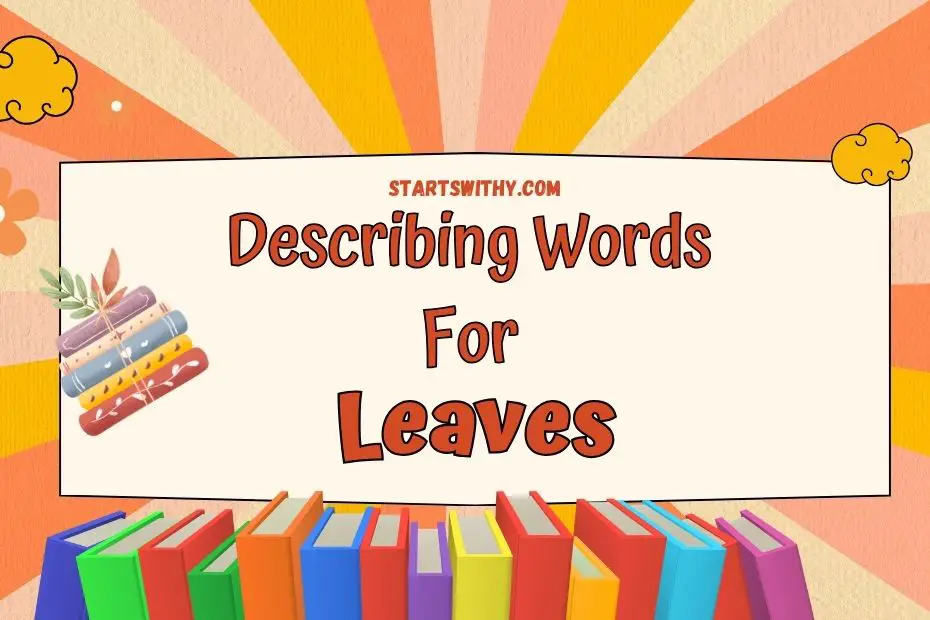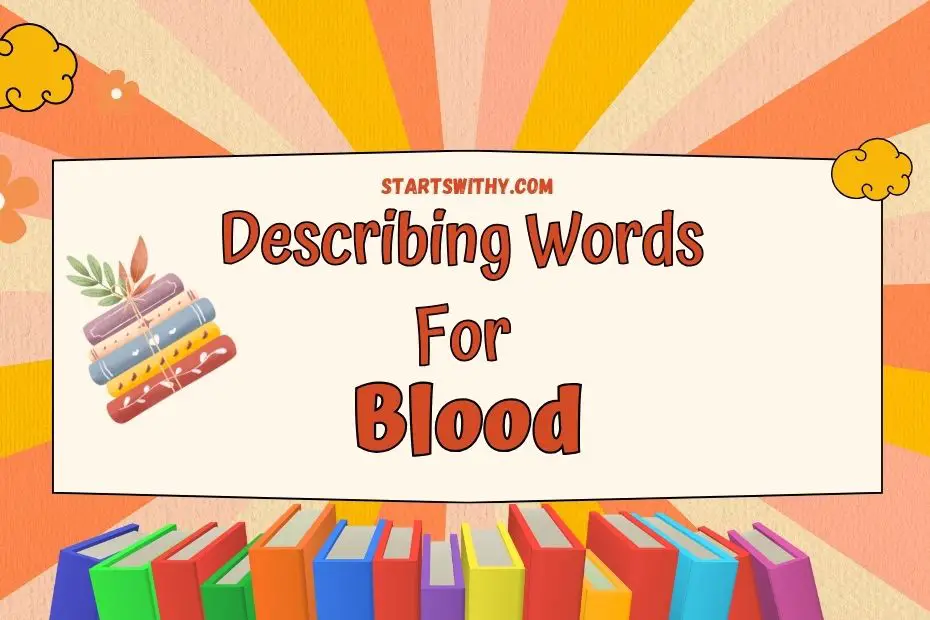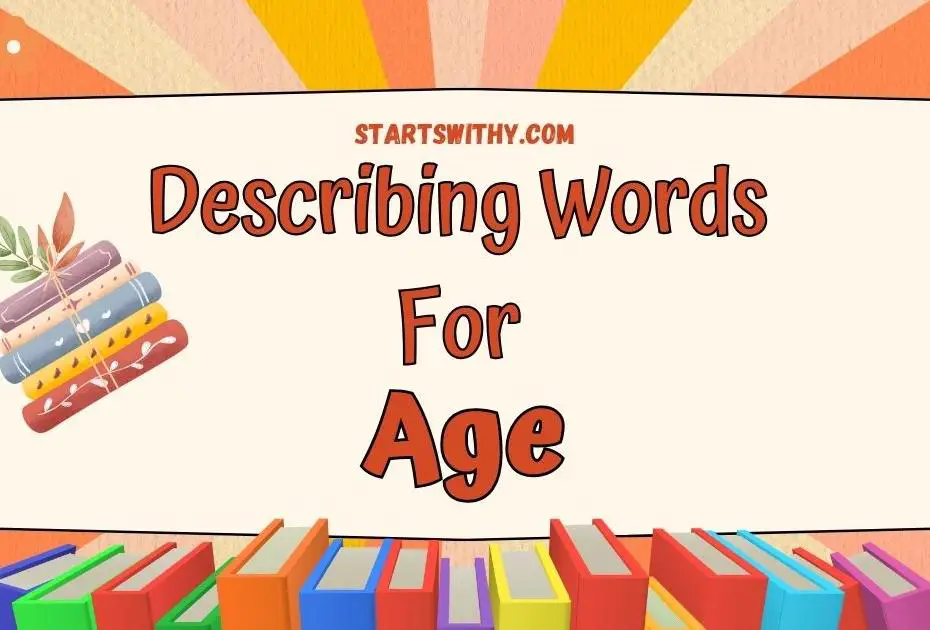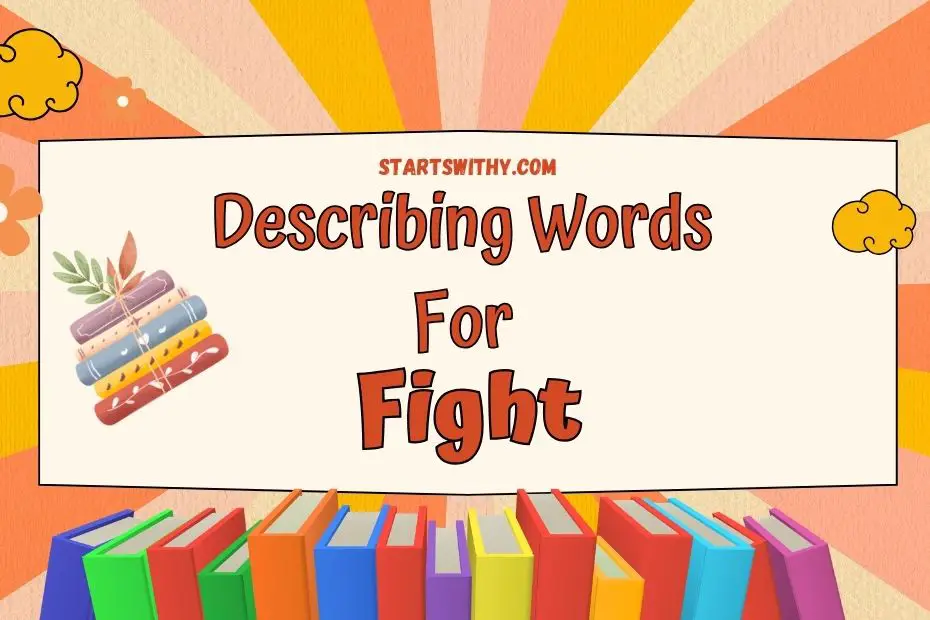When it comes to describing the beauty of nature, leaves are often the unsung heroes. From vibrant hues to intricate patterns, leaves have a way of captivating our senses. In this article, I’ll be sharing a list of adjectives that can be used to describe leaves, along with some examples to help bring these descriptions to life.
Leaves come in an astonishing array of shapes, sizes, and textures, making them a perfect canvas for descriptive words. Whether you’re a nature enthusiast, a writer looking for inspiration, or simply someone who appreciates the wonders of the natural world, this list of adjectives will help you convey the unique characteristics of leaves in all their glory.
From “lush” and “verdant” to “crisp” and “brittle,” these adjectives will allow you to paint a vivid picture of leaves in your writing. So, without further ado, let’s dive into the world of adjectives for leaves and explore the endless possibilities for describing their beauty and charm.
How to Describe leaves? – Different Scenarios
When it comes to describing leaves, there are countless ways to capture their unique beauty and characteristics. Depending on the scenario or context, you can use different adjectives to paint a vivid picture for your readers. Here are some scenarios and adjectives that can help you effectively describe leaves:
1. Colorful Leaves
When the leaves are vibrant and filled with bright hues, you can use adjectives that convey their vibrant colors. Some examples include:
- Radiant: The leaves are glowing and full of vibrant colors.
- Brilliant: The colors of the leaves are striking and intense.
- Saturated: The leaves are rich in color, with deep and bold tones.
2. Autumn Leaves
Autumn leaves have their own distinct charm, characterized by warm tones and a sense of change. Here are some adjectives to describe autumn leaves:
- Golden: The leaves take on a warm golden hue, reminiscent of the sun.
- Rustic: The leaves have earthy shades of red, orange, and brown, creating a cozy and traditional atmosphere.
- Crisp: The leaves are dry and make a satisfying sound when stepped on, signaling the arrival of fall.
3. Lush Leaves
When describing leaves that are full, abundant, and thriving, you can use adjectives that convey a sense of lushness and growth. Consider the following examples:
- Verdant: The leaves are lush and green, representing vibrant life and growth.
- Luxuriant: The leaves are abundant and thick, giving a sense of opulence and richness.
- Bountiful: The leaves are plentiful and full, symbolizing abundance and fertility.
4. Delicate Leaves
Some leaves have a delicate and fragile appearance, making them unique to describe. Here are a few adjectives that capture their delicate nature:
- Filigree: The intricate and delicate patterns on the leaves resemble elaborate lacework.
- Dainty: The leaves are small, delicate, and effortlessly charming.
- Feathery: The leaves have thin and wispy structures, resembling the softness and lightness of feathers.
Describing Words for leaves in English
Describing Words for Leaves in English
Leaves come in a variety of shapes, sizes, and colors, making them a fascinating subject to describe. Whether you’re a writer looking to capture the essence of nature or a teacher seeking to expand your students’ vocabulary, here are some adjectives to help you describe leaves in English.
Vibrant Leaves:
- Colorful: Leaves can be bright, bold, or even dazzling in their colors. Think of shades like crimson, golden, emerald, or scarlet.
- Eye-catching: Some leaves grab our attention with their striking or unusual hues. They might be variegated, displaying a mix of colors, or feature distinctive patterns.
Autumn Leaves:
- Warm: As the seasons change, leaves can take on warm tones like orange, red, and yellow. Their colors evoke a sense of coziness, signaling the arrival of fall.
- Falling: Autumn leaves can be described as crisp, crackling, or even fluttering in the wind. They create a beautiful rustling sound as they descend to the ground.
Lush Leaves:
- Verdant: Use this adjective to describe leaves that are lush, green, and full of life. Picture leaves that are plump, juicy, and radiate a sense of vibrancy.
- Abundant: When describing a foliage of leaves, you can use words like thick, dense, or luxuriant to portray a lush, thriving environment.
Delicate Leaves:
- Fragile: Some leaves have a delicate nature, appearing dainty, fragile, or even delicate. They might be translucent, allowing light to pass through them, or feature intricate veins.
- Feathery: Leaves with fine, feathery textures can be described as airy, light, or ethereal. They give the impression of floating or dancing in the breeze.
Remember, when describing leaves, it’s important to consider their shape, texture, size, and context. These descriptors can enhance your writing or teaching materials, enabling you to convey the beauty and uniqueness of leaves in a more vivid and engaging way.
Adjectives for leaves
As an expert blogger, I have years of experience writing high-quality articles. Today, I’ll be providing you with a list of adjectives to help describe leaves in English. Whether you’re a kindergarten or preschool teacher looking to teach easy words to kids, or simply want to enhance your writing, these adjectives will come in handy.
Positive Adjectives for Leaves
When describing leaves, you’ll often want to capture their vibrant colors, patterns, and overall beauty. Here are 12 positive adjectives to help you do just that:
| Adjective | Example Sentence |
|---|---|
| Vibrant | The leaves were vibrant shades of red, orange, and yellow. |
| Colorful | We admired the colorful assortment of leaves on the ground. |
| Radiant | The sunlight shining through the leaves gave them a radiant glow. |
| Majestic | The tall trees with their majestic leaves created a breathtaking sight. |
| Lively | The lively dance of the leaves delighted the children. |
| Resplendent | The trees were adorned with resplendent fall foliage. |
| Striking | The striking contrast between the green leaves and blue sky was remarkable. |
| Picturesque | The landscape painted a picturesque scene with its fallen leaves. |
| Serene | The serene rustle of leaves in the breeze created a peaceful atmosphere. |
| Awe-inspiring | We were in awe of the awe-inspiring beauty of the autumn leaves. |
| Magical | The forest felt magical with its carpet of colorful leaves. |
| Charming | The charming leaves danced and twirled in the wind. |
Negative Adjectives for Leaves
Sometimes, you may want to describe leaves in a less positive light. Maybe you want to convey a sense of decay or sadness. Here are 5 negative adjectives to help you achieve that:
| Adjective | Example Sentence |
|---|---|
| Withered | The withered leaves crumbled to dust in my hands. |
| Brittle | As I stepped on the brittle leaves, they made a crunching sound. |
| Dull | The dull brown leaves covered the ground, signaling the end of autumn. |
| Decaying | The forest floor was covered in decaying leaves, giving off a musty smell. |
| Faded | The once vibrant leaves had faded, losing their luster. |
Remember, when describing leaves, it’s important to consider their shape, texture, size, and context. These adjectives will help bring your writing to life and engage your readers or students.
Now that we’ve covered positive and negative adjectives for leaves, let’s move on to other aspects of describing leaves in the following sections.
Synonyms and Antonyms with Example Sentences
Synonyms for leaves
When it comes to describing leaves, there are numerous adjectives that can capture their unique characteristics. Here are some synonyms that can help you paint a vivid picture:
| Adjective | Definition | Example Sentence |
|---|---|---|
| Lush | Green and healthy | The lush leaves of the tree danced in the breeze. |
| Radiant | Bright and glowing | The radiant leaves shimmered in the autumn sunlight. |
| Whimsical | Playfully unique and fanciful | The whimsical leaves fluttered like butterfly wings. |
| Vibrant | Full of vivid colors | The vibrant leaves painted the forest in stunning hues. |
| Delicate | Fragile and intricate | The delicate leaves quivered at the touch of a gentle breeze. |
Antonyms for leaves
On the flip side, there are also adjectives that describe the less desirable aspects of leaves. Here are some antonyms that convey a sense of decay or sadness:
| Adjective | Definition | Example Sentence |
|---|---|---|
| Withered | Dried up and faded | The withered leaves crumbled beneath my feet. |
| Blighted | Diseased or damaged | The blighted leaves on the tree signaled the end of summer. |
| Dull | Lacking brightness or color | The dull leaves fell silently to the ground. |
| Wilting | Drooping and lacking vitality | The wilting leaves showed signs of dehydration. |
| Brittle | Easily breakable or fragile | The brittle leaves snapped with every step. |
As you can see, choosing the right adjectives can bring your descriptions of leaves to life, whether you want to convey their vibrancy or their decline. Consider the shape, texture, size, and context of the leaves to choose the most appropriate adjectives. Stay tuned for more sections covering other aspects of describing leaves.
Conclusion
In this article, I have provided you with a comprehensive list of adjectives to describe leaves in English. From positive words like “lush,” “radiant,” and “vibrant,” to negative ones like “withered,” “blighted,” and “brittle,” these adjectives capture the various aspects of leaves, including their colors, patterns, and condition.
Remember, when describing leaves, it’s important to consider their shape, texture, size, and the context in which they are found. This will help you choose the most accurate and evocative adjectives to convey the beauty or decay of the leaves.
I hope this list has been helpful in expanding your vocabulary and enabling you to describe leaves in a more vivid and engaging way. Stay tuned for more sections in the future, where we will explore other aspects of describing leaves.
So, whether you’re writing a poem, a nature blog, or simply want to appreciate the natural world around you, these adjectives will add depth and richness to your descriptions. Happy writing!



